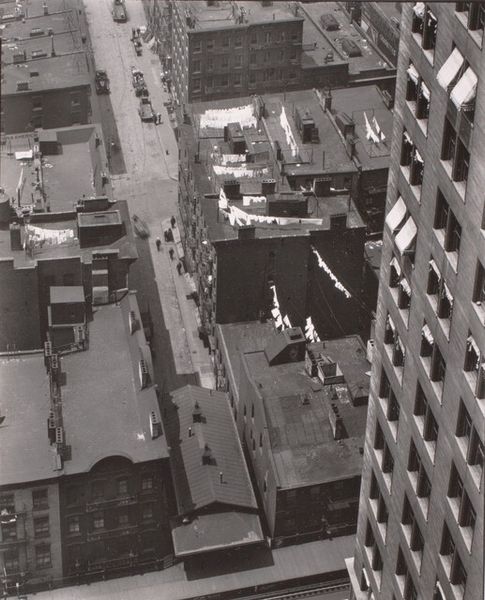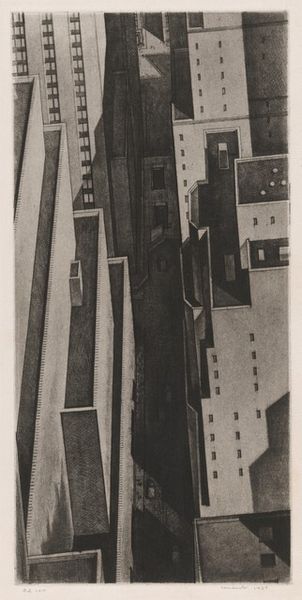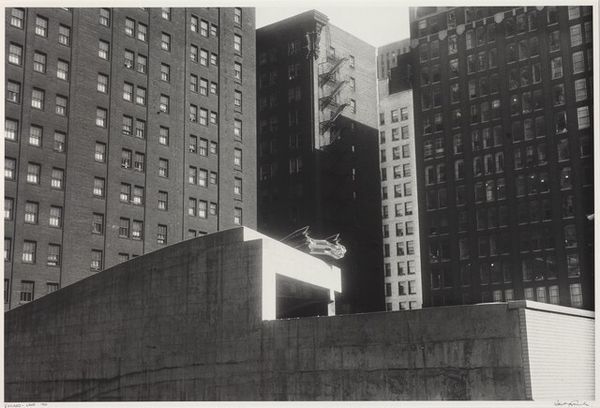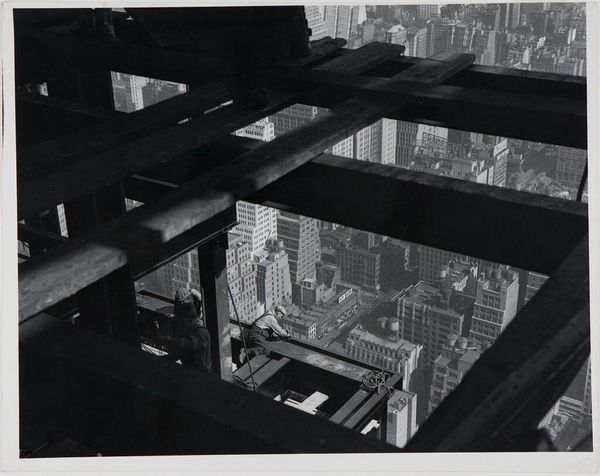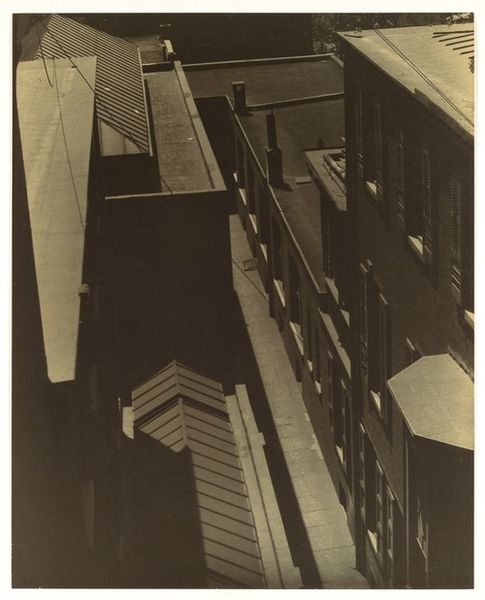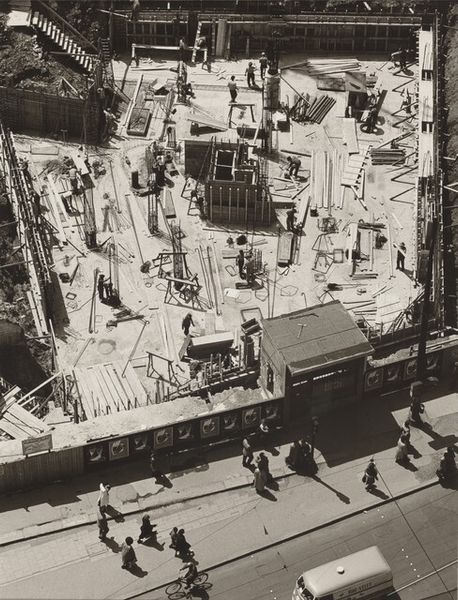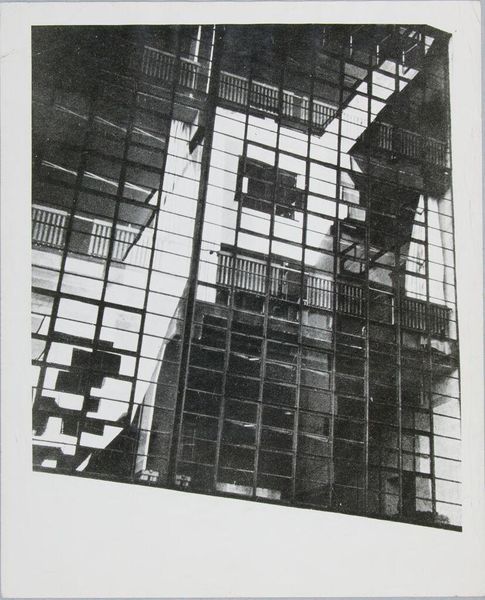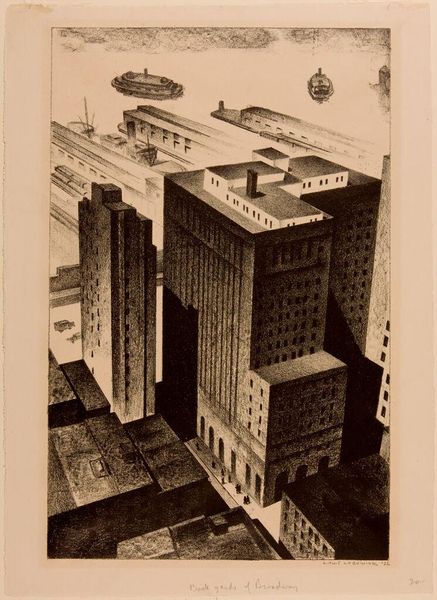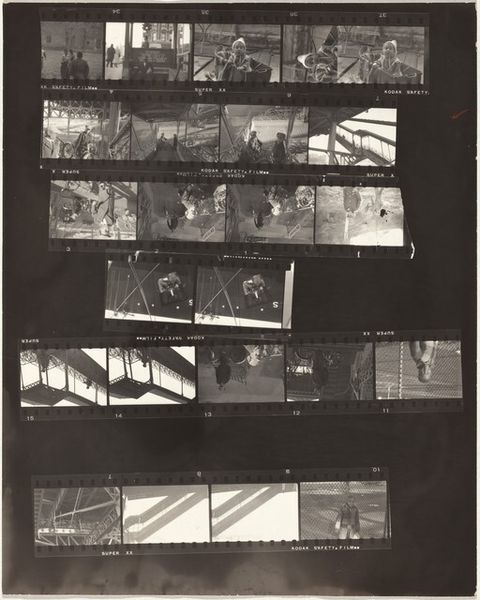
photography
#
street-photography
#
photography
#
geometric
#
cityscape
#
realism
Dimensions: sheet (trimmed to image): 50.3 x 29.9 cm (19 13/16 x 11 3/4 in.)
Copyright: National Gallery of Art: CC0 1.0
Curator: Ilse Bing’s "New York: Courtyard with Laundry and Reflections of Sunlight" from 1952 offers us a compelling glimpse into urban life. It's a gelatin silver print, characteristic of her sharp, realist approach. Editor: Initially, it strikes me as a study in contrasts – the stark shadows against the dazzling highlights create a visually complex yet somewhat melancholic mood. Curator: Indeed. Bing was fascinated by the geometry of cityscapes and the play of light, wasn’t she? Here we see it used to frame the mundane realities of urban existence – the laundry strung between buildings becomes an integral part of the visual texture. Think of the labor embedded within those clothes. Editor: Absolutely. And let's consider the social implications: the courtyard becomes a shared space, a site of both labor and perhaps community interaction, all framed by these rigid structures and fire escapes hinting at urban density and, perhaps, socioeconomic constraints. Laundry lines in photographs often speak to women's unseen labor. Curator: Right, it's vital to look at those structures. The materiality of the photograph itself – the gelatin silver process allows for a striking level of detail in those textures and patterns. Note the fire escapes: they are mass-produced items. But even these utilitarian objects gain a certain grace in Bing’s lens, mirroring the simple beauty of the everyday. Editor: I find myself drawn to the reflections of sunlight, they feel almost like ghosts dancing on the pavement. The image resonates with ideas about visibility and invisibility. This courtyard seems simultaneously private and exposed, concealing yet revealing lives within those walls. Curator: The framing Bing used deliberately creates this tension; how the artist physically positioned the camera impacts our relationship to the composition as well as subject matter. Editor: And those light reflections also highlight the element of ephemerality and make us consider that the city is a constantly shifting landscape of shadows, revealing new stories with each passing moment. Curator: What Bing presents, in essence, is the visual architecture that impacts how laboring people negotiate a bustling existence in the city. She highlights the beautiful geometry, and inherent difficulties, in just living within its systems. Editor: It really highlights how Bing made visible what might otherwise remain unnoticed or overlooked. Thanks for illuminating that for me.
Comments
No comments
Be the first to comment and join the conversation on the ultimate creative platform.
